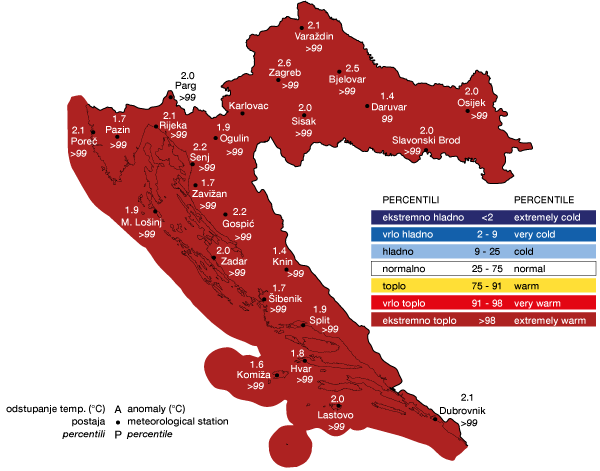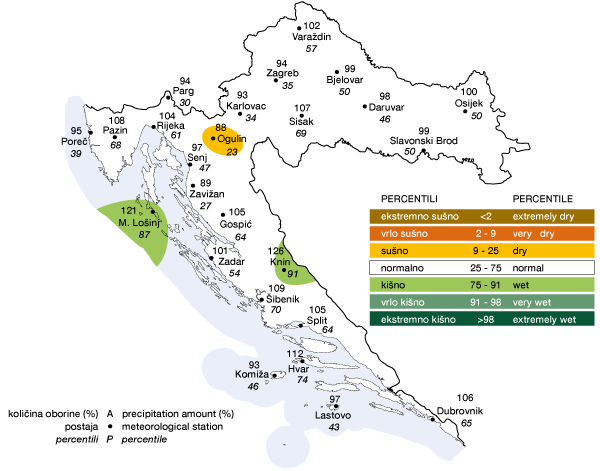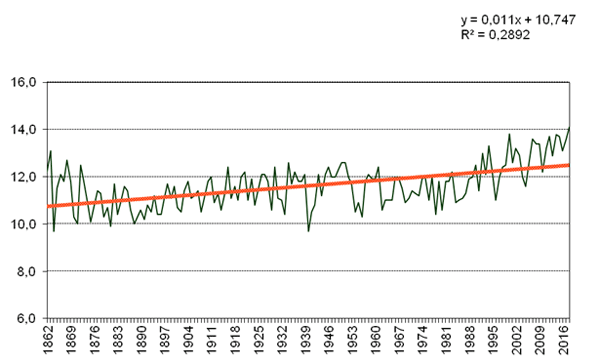Air temperature anomalies for Croatia in 2018.
The average annual air temperature in Croatia in 2018 was above the multi-annual average (1961 - 1990). Average annual air temperature anomalies were within the range from 1.4 °C (Daruvar and Knin) to 2.6 °C (Zagreb-Grič).
According to percentile ranks and classification ratings, thermal conditions in Croatia in 2018 dominantly fall into the extremely warm category (whole territory of the Republic of Croatia).

Precipitation amounts for Croatia in 2018.
An analysis of annual precipitation amounts in 2018 expressed as percentages (%) of the 1961 - 1990 average indicates that precipitation amounts in Croatia at roughly equal number of analyzed stations were above or below the average, with the exception of the main meteorological station Osijek, where the precipitation amount was on par with the average.
A comparison with the multi-annual average reveals that the precipitation amounts in 2018 were within the range of 88 % - 126 % of the above mentioned average. The wider areas of the towns of Mali Lošinj and Knin fall into the wet category while the wider area of the town of Ogulin falls into the dry category. The rest of Croatia is in the normal category.

The average annual air temperature for the Zagreb-Grič Observatory
A comparison of the average annual air temperature for the main meteorological station Zagreb-Grič in the period 1862 - 2018 indicates that the year 2018 is the warmest year on record (the average annual air temperature for Zagreb-Grič for the year 2018 is 14.1 °C).
The positive average annual air temperature trend of 1.1 °C/100 yrs is apparent, as shown in Figure 1. The above indicates that the air temperature trend in Croatia is in accordance with the global warming trend, with certain inter-annual fluctuations.

Figure 1. Average annual air temperature for the main meteorological station Zagreb-Grič in the period 1862 - 2018.